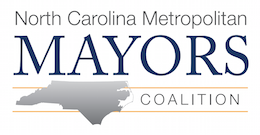Kienitz: Administration Won’t Unveil Its Proposal Until February (AASHTO)
The Obama administration plans to release detailed proposals for a surface transportation reauthorization bill and national infrastructure bank with the Fiscal Year 2012 budget in February 2011, a top U.S. Department of Transportation official told reporters Tuesday after a Senate hearing.
Roy Kienitz, undersecretary for policy at USDOT, said the administration plans to use the six-year surface transportation legislation as the vehicle for authorizing a national infrastructure bank, BNA reported.
The White House has favored a bank starting with a mission to fund transportation projects, and eventually broadening to cover other areas of infrastructure. President Barack Obama has asked Congress to authorize an infrastructure bank or fund during his last two annual budget submissions, but neither the House or Senate has acted to approve the request.
During a Labor Day speech in Milwaukee, the president laid out a plan to jumpstart job creation with a $50 billion investment in highway, bridge, transit, high-speed rail, and aviation infrastructure that would be added to the first year of a six-year surface transportation reauthorization bill. (see Sept. 10 AASHTO Journal story) Obama’s plan includes creating an infrastructure bank to leverage federal dollars and encourage private investment to complete projects that don’t always qualify for existing federal funding programs.
Kienitz made his comments Tuesday after a Senate Banking, Housing, and Urban Affairs Committee hearing on infrastructure funding. The last multiyear surface transportation authorization law known as “SAFETEA-LU” expired Sept. 30, 2009. Congress temporarily extended the law until Dec. 31.
Senators Raise Concern About Bank Concept
Sen. Richard Shelby, R-Alabama and ranking minority member of the banking committee, said during Tuesday’s hearing that a national infrastructure bank could end up as a government-sponsored enterprise such as mortgage lenders Fannie Mae and Freddie Mac. That could result in taxpayers footing the bill for failed projects, Shelby warned.
But Kienitz and Alan Krueger, assistant secretary for economic policy at the U.S. Treasury Department, responded that an infrastructure bank would be different than a government-sponsored enterprise. The bank would be structured more like the existing USDOT’s Transportation Infrastructure Finance and Innovation Act program known as “TIFIA.” This program lends money to state transportation departments for development of projects such as tollways that will produce an income stream to repay the loans.
Written testimony and a webcast of Tuesday’s hearing are available at bit.ly/SBHUAC092110.


